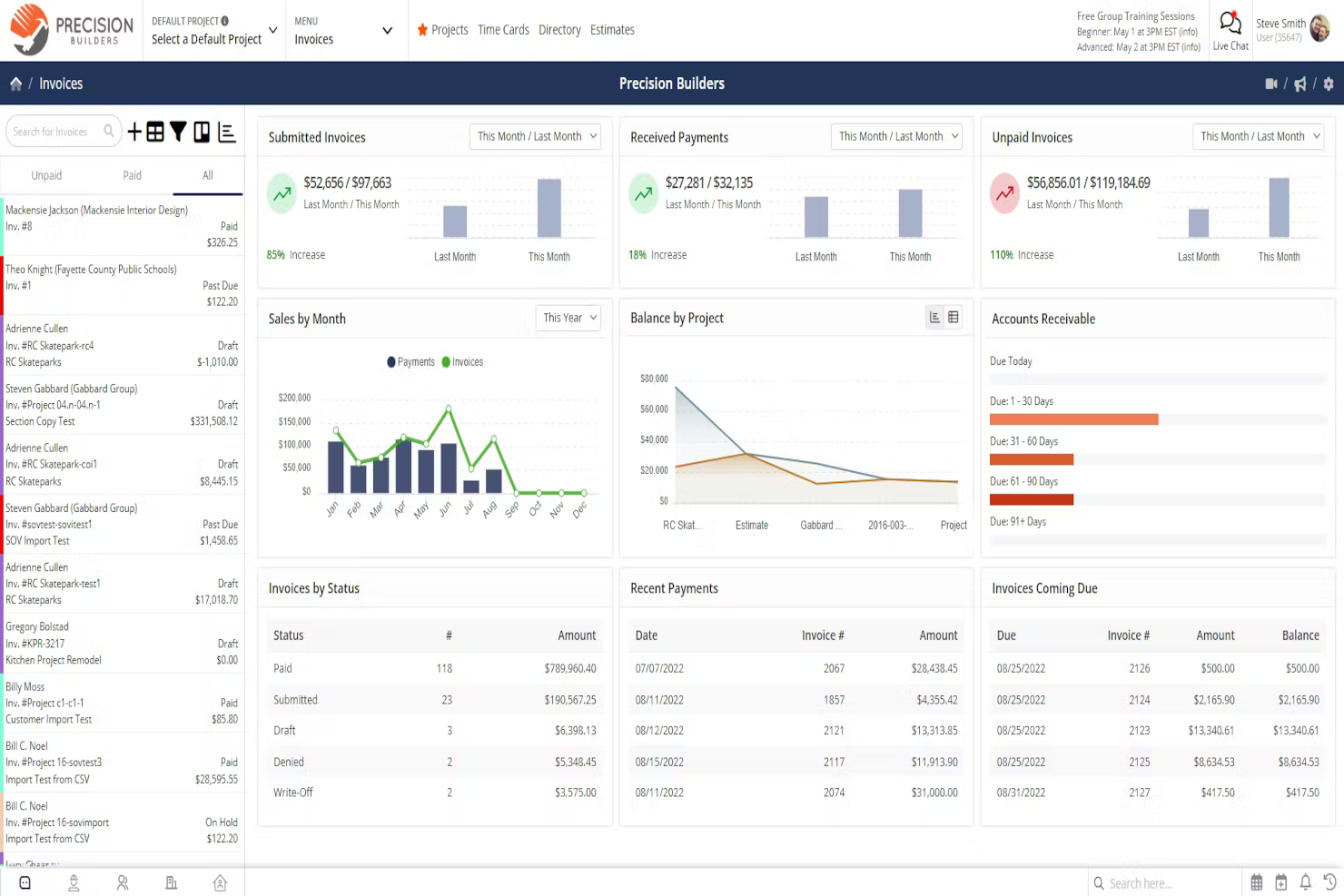Construction Software for Effective Project Planning and Execution
Construction Software for Effective Project Planning and Execution
Blog Article
Customized Construction Monitoring Software Application: Optimizing Resource Allowance and Budgeting Techniques
These innovative tools use a nuanced strategy to maximizing resource allocation and budgeting methods, essential elements for successful project implementation. By delving right into the intricacies of exactly how such software application can boost resource allocation approaches and fine-tune budget optimization techniques, a clear path toward heightened task effectiveness emerges.
Advantages of Tailored Software Program Solutions
Customized software application remedies offer a myriad of benefits to building and construction administration companies seeking to improve effectiveness and streamline procedures. One essential advantage is the customization of functions to align with the details requirements of the construction industry (construction mangement software). By customizing software program solutions to resolve job management, scheduling, budgeting, and source allocation, companies can optimize their process and achieve higher efficiency. Additionally, customized software program permits smooth integration with existing systems, decreasing the need for hand-operated information access and lessening errors.
An additional benefit of customized software options is the capability to give real-time insights and analytics. Building and construction management firms can leverage data-driven decision-making to keep track of task development, recognize bottlenecks, and make modifications without delay. This positive technique boosts job results and helps firms remain on track with timelines and budget plans.

Improved Source Allowance Techniques
Carrying out efficient resource allotment approaches is critical for building and construction administration companies to enhance project end results and optimize productivity. Boosted source allotment techniques involve purposefully assigning employees, tools, and materials to specific tasks to guarantee optimal use of sources. One vital facet of enhanced source allotment is the capability to properly anticipate project requirements and assign sources accordingly. By leveraging building monitoring software that provides real-time tracking and reporting attributes, firms can dynamically change appropriations as project needs develop, bring about improved effectiveness and cost-effectiveness.
Additionally, enhanced source appropriation approaches make it possible for construction companies to recognize and resolve prospective bottlenecks or resource restrictions proactively. By carrying out regular analyses of source usage and performance metrics, managers can make data-driven decisions to rearrange sources successfully and avoid hold-ups. This positive technique not just enhances task timelines yet likewise decreases the risk of budget overruns because of ineffective source allocation.
Spending Plan Optimization Methods
To accomplish ideal monetary efficiency in building projects, efficient spending plan optimization methods play a pivotal role in ensuring cost control and job success. One crucial technique is the establishment of an straight from the source in-depth project budget plan that allots sources based upon concern and important needs. By clearly defining the range of job, establishing realistic cost price quotes, and continuously surveillance costs, construction supervisors can determine prospective price overruns early on and take restorative actions. Furthermore, implementing value design practices can assist weblink improve job expenses without jeopardizing quality. This involves evaluating each task element to recognize possibilities for price financial savings while preserving performance requirements. Additionally, leveraging historic information and industry criteria enables building supervisors to make educated choices regarding budget appropriations and determine areas where costs can be enhanced. By integrating these spending plan optimization techniques into building and construction management software, job stakeholders can boost monetary preparation, source allowance, and total spending plan administration to drive job success and profitability.

Influence On Project Performance
Maximizing construction administration software can considerably enhance job efficiency by streamlining interaction, enhancing collaboration, and promoting data-driven decision-making. In addition, building and construction monitoring software can provide important insights through data analytics, allowing task supervisors to make enlightened decisions quickly and properly.
In addition, the automation of routine jobs such as organizing, spending plan monitoring, and source allotment can liberate beneficial time for job groups to concentrate on important activities, ultimately speeding up project distribution. The capacity to keep an eye on job development in real-time and determine potential bottlenecks makes it possible for aggressive problem-solving, preventing problems from intensifying and causing delays. Generally, the influence of tailored construction administration software program on task performance is obvious, offering he has a good point an affordable benefit by maximizing operations and maximizing efficiency.
Future Trends in Building And Construction Software Application
As the construction market proceeds to evolve, advancements in modern technology are forming the future landscape of building software program remedies. One considerable fad imminent is the increasing assimilation of expert system (AI) and artificial intelligence capacities in construction software. These modern technologies have the possible to transform exactly how construction tasks are handled by allowing predictive analytics, automated decision-making procedures, and improved task insights.
Another future fad in construction software application is the expanding focus on cloud-based options. Cloud innovation uses increased flexibility, scalability, and ease of access for building and construction teams, enabling real-time partnership and data sharing throughout task stakeholders. This change in the direction of cloud-based software is expected to boost task effectiveness, simplify interaction, and enhance overall project results.
Furthermore, the increase of Structure Details Modeling (BIM) is expected to proceed shaping the building and construction software landscape. BIM software program promotes 3D modeling, visualization, and information monitoring, bring about enhanced job coordination, reduced errors, and enhanced task results. Welcoming these future patterns in building and construction software application will be critical for business wanting to stay competitive and drive innovation in the sector.
Final Thought
To conclude, customized building and construction management software offers countless advantages such as enhanced source allotment approaches and spending plan optimization strategies. This software has a significant influence on project performance by enhancing procedures and enhancing total efficiency (construction mangement software). As modern technology proceeds to advancement, future trends in construction software application are anticipated to further maximize resource allotment and budgeting approaches for building tasks
Report this page